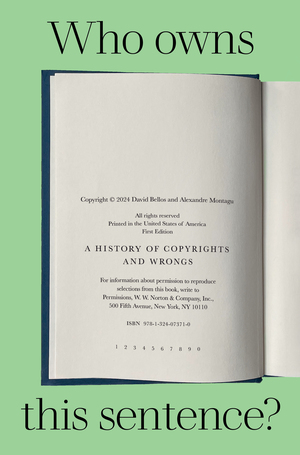However, the greatest perceived threat to financial stakeholders in the culture industry in the later years of the twentieth century came from Tim Berner-Lee’s invention of the World Wide Web. Initially designed as a tool to allow scientists to share their work, it quickly became a means for distributing perfect copies of text, and then sound and image files, at a marginal cost that was, for the first time, zero to the copier, if not to the planet.
Publishers feared their entire business would be destroyed, and music companies were in an even greater panic. Peer-to-peer technologies were devised to enable perfect reproductions of music recordings to be made and shared widely—thus rendering C.D.s obsolete overnight. The music industry tried to pursue the companies that hosted these services or facilitated the Internet connections that allowed them to function. In an effort to insulate themselves from this type of liability, the Internet service providers (I.S.P.s) successfully lobbied Congress for a “safe harbor,” which eventually came in 1998, under the Digital Millennium Copyright Act, or D.M.C.A.
The concept of a “safe harbor” protection for I.S.P.s was not entirely new. It had first arisen in an entirely different context: pornography. In its early days, the Internet enabled purveyors of salacious material to circumvent restraints on sending obscene publications by mail, and it soon turned into what many saw as a global sewer for unacceptably explicit sexual material.
France’s homegrown answer to the Internet, the text-only terminal called Minitel, was likewise used for escort services and erotic chat-lines, constituting a whole new industry called le minitel rose. Sex makes news, and news makes politics. So the first response to the “Internet threat” was aimed at sanitizing its contents.
The Communications Decency Act of 1996, the brainchild of Senator James Exon, sought to remove “filth” from the Internet through various mechanisms of control that were close to moral censorship. However, another senator, Ron Wyden, saw that Exon’s stringent proposals risked stifling a whole new adventure in its cradle. He succeeded in adding to it a special provision to protect Internet service providers from legal liability for material that their users post on the web.
The wording he had inserted under Section §230 states that “No provider or user of an interactive computer service shall be treated as the publisher or speaker of any information provided by another information content provider,” thus paving the way for the “safe harbor” provisions of the Digital Millennium Copyright Act, which now apply to all kinds of online sites, including social media.
